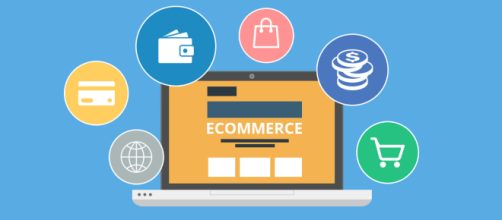The e-commerce industry is experiencing more growth than ever before. Reports from Statistics indicate an increase of $4.5 trillion by 2021 from $2.4 trillion in 2017. According to the Economic Time magazine e-commerce is expected to grow four times this year worldwide. Keeping up with the latest trends could give your online business an edge over competitors and boost sales. Here is the whole lineup of trends likely to dominate in 2018.
1. Animation
Using animation has been a great way for brand storytelling and it keeps evolving with new technological innovations.
Animations are an incentive for online business owners because they have a smaller file size compared to videos. This means they load fast and do not affect overall site speed. This year expect to see a mix of 2D and 3D animations to create a perfect balance of depth and attractiveness. Consider combining motion animation with augmented reality to create an improved user experience.
2. Chatbots and messenger apps
There has been a global increase in the use of messaging apps more than any other channel. According to Hubspot, 48 percent of consumers prefer to connect with a company through live chat. Data from Ubisend further states that 35 percent of consumers would like to see more companies make use of Chatbots to enhance the consumer experience.
This year is the right time to invest in a chatbot builder to help you drive engagement, boost sales and provide a better customer support system.
3. Drone delivery
Customers keep expecting quicker delivery for the products they purchase online. Brands have come up with a new delivery innovation that is still in testing which is drone delivery. This will enable companies to deliver products efficiently, especially in areas where poor transportation negatively affects courier delivery. Same day delivery is quickly becoming the standard in the e-commerce industry so drones sent from a distribution point to the delivery location will be a low-cost option for online business owners to follow.
4. Increase in mobile payment
An Invesp report indicates that by the end of 2018, e-commerce sales using mobile devices will rise by 27 percent. It is therefore important to make your e-commerce site optimized for mobile. Mobile payment options such as Apple Pay, shopping apps and mobile-first stores will encourage shoppers to switch from desktop payments. Online businesses will also leverage one-click payments to boost their repeat sales revenue.
5. Machine learning and AI
There has already been an integration into e-commerce systems such as improved search and product recommendations. However, 2018 promises exponential growth in the application of these technologies. Product recommendations will move away from keyword-based methods to systems that incorporate numerous signals such as purchase history, thematically related products and personalization of results based on shopping preferences.
We will also see the adoption of machine learning within online advertising platforms, especially in AdWords to maximize the impact of these marketing campaigns.
6. Micro-influencer marketing
Influencer marketing will continue to be a key marketing strategy to increase visibility and credibility for online brands. What will change this year is the rise of micro-influencer marketing. Micro-influencers are active social media users with less than 10,000 followers. What makes micro-influencers an asset to online brands is their level of engagement. They have a close relationship with their loyal and super targeted audience. Your brand will gain trust just by associating with micro-influencers in your given business niche.
Their compensation could be in terms of cash or free products. According to Shopify, you can find out how to help clients with new marketing solutions.
7. Native shopping
Studies show that buyers who use visual platforms such as Instagram and Pinterest do not want to leave the platform to visit the webpage of an online store. This year, we will see online businesses providing the option of purchasing products from within these apps. For instance, Pinterest has the “shop the look” feature that enables users to click on any part of an outfit they are interested in buying. Users can then find details on the item they like on Pinterest. They only exit the site when they are ready to make a purchase.


